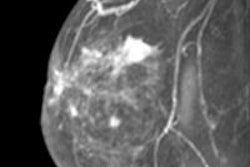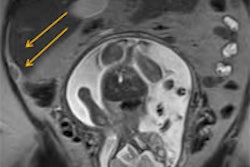The use of transcranial MR-guided focused ultrasound (MRgFUS) for thalamotomy can lead to significant positive effects in patients with essential tremor, according to a study presented at the American Association of Neurological Surgeons (AANS) meeting in New Orleans.
In a thalamotomy procedure, part of the thalamus is destroyed to potentially reduce tremor in patients with Parkinson's disease.
For the phase I trial, 15 patients with medication-refractory essential tremor underwent transcranial MRgFUS thalamotomy targeting the ventral intermediate nucleus. Adverse events were recorded throughout the study, with neurologic assessments for sensation, gait, strength, and balance, according to a release from AANS.
A rating scale for tremor was used to evaluate the procedure's efficacy, and a quality-of-life questionnaire was completed before treatment and at three and 12 months after treatment. Lesions were assessed by MRI one day, one week, one month, and three months following treatment.
The study, presented by Dr. William Jeffrey Elias from the University of Virginia School of Medicine, showed a 67% reduction in contralateral hand tremor at one year. This reduction of tremor in the dominant hand resulted in substantial improvements in daily disabilities (83%) and quality of life.
In addition, adverse events from the treatment were minimal and consisted mostly of mild sensations in the face or hand.
The researchers cautioned that the preliminary feasibility study was not designed to determine the safety and efficacy of the treatment. However, from the initial investigation, transcranial MRgFUS thalamotomy seems feasible and safe enough to proceed with more comprehensive clinical trials, the group concluded.



















